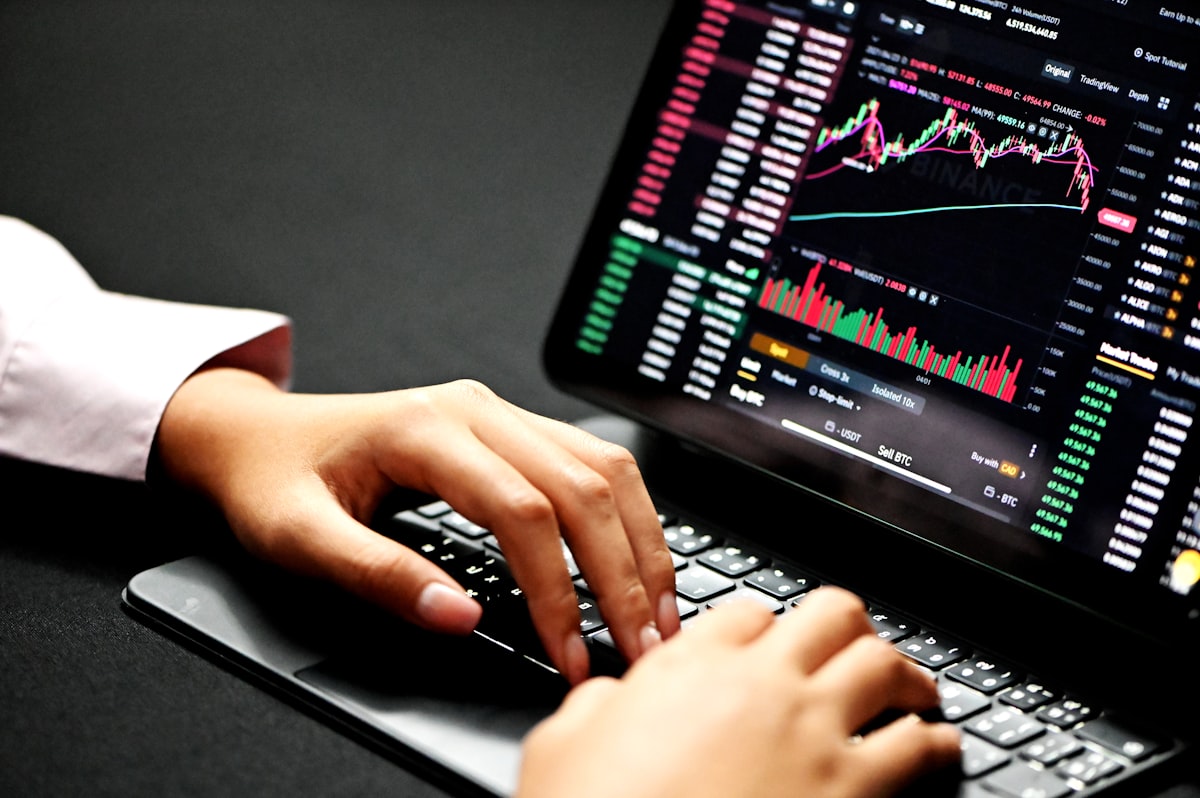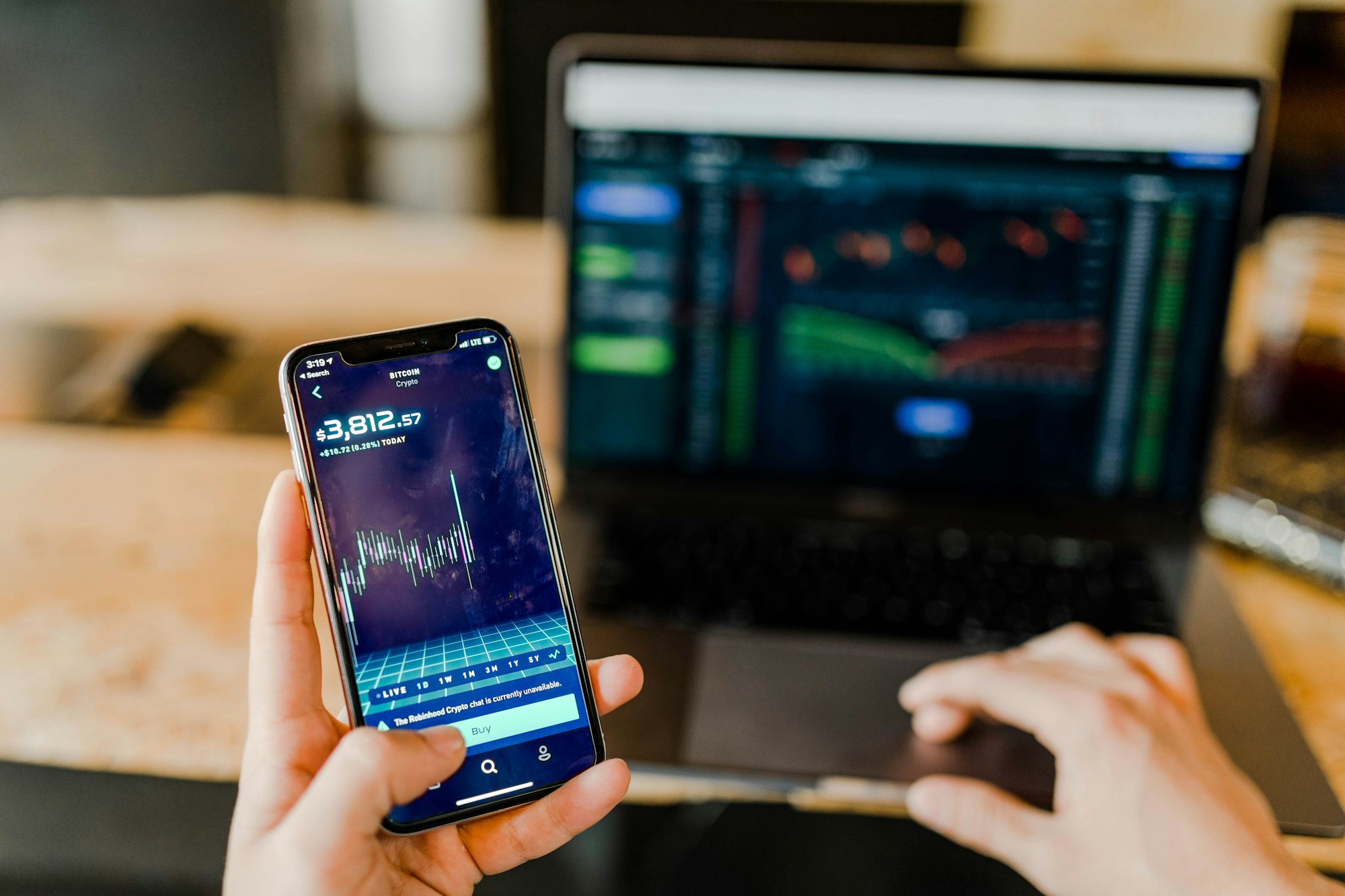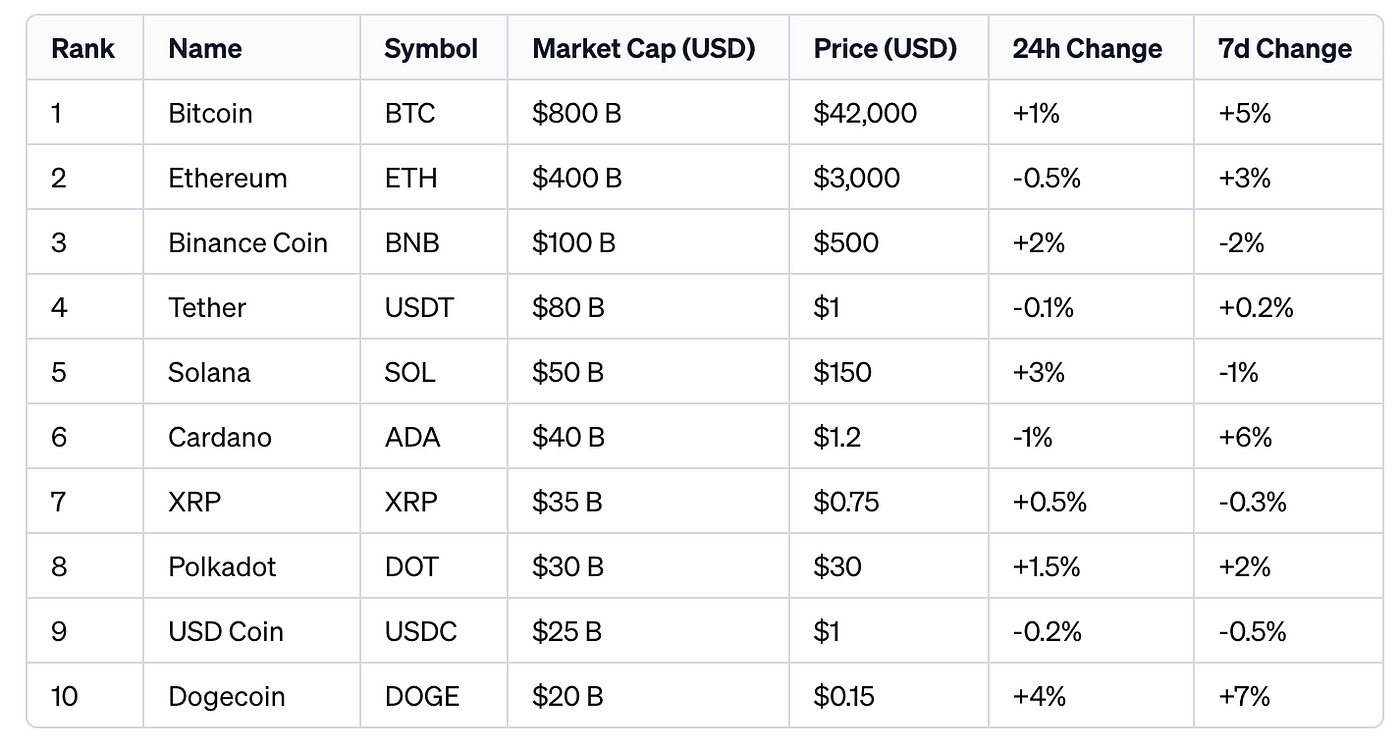A Beginner's Guide to Trading in 2023
Get the fundamentals of trading right with this comprehensive beginner's guide, and start your journey to financial freedom with our exclusive newsletter!

Are you interested in trading, but unsure where to start? Look no further! This beginner's guide to trading will provide you with all the information you need to get going. We'll discuss the basics of trading, from different types of markets and assets to understand, to strategies and risks involved. Additionally, we'll cover the details of setting up a trading account and how to use different tools and strategies for success. Finally, we'll explore the potential rewards and risks associated with trading. By the end of this article, you'll have a clearer understanding of what it takes to become a successful trader. So don't wait any longer - sign up for our newsletter today and get started on your journey towards financial freedom!
Summary
• Trading is the activity of buying and selling financial instruments, such as stocks, currencies, commodities, or cryptocurrencies.
• To be successful in trading, it is important to understand the different types of markets available, as well as the tools and strategies used by traders.
• By the end of this article, you'll have a clearer understanding of what it takes to become a successful trader.
Overview of trading
Trading is the activity of buying and selling financial instruments, such as stocks, currencies, commodities or cryptocurrencies. It is an essential part of the global economy and can provide significant rewards for those willing to invest their time and effort into learning about trading. To be successful in trading, it is important to understand the different types of markets available, as well as the tools and strategies used by traders.
The most common type of market is the stock market, where investors buy and sell shares in publicly traded companies. Other popular markets include currency (forex), commodity (futures) and cryptocurrency markets. Each type of market has its own set of rules and regulations that need to be followed when trading.
Market analysis is a key component of successful trading. This involves looking at macro-level data such as economic indicators or geopolitical events to determine how different assets will move in relation to each other. Fundamental analysis looks at factors such as company earnings reports or industry news, while technical analysis examines historical price patterns on charts for clues on future price movements.
Traders also use various tools in order to make informed decisions when trading. These include charting software which allows traders to view historical price movements over time on charts, as well as automated trading bots which can execute trades automatically based on preset criteria.
Finally, traders must choose from a variety of strategies when entering trades. These include trend-following strategies which attempt to capitalize on existing trends in asset prices over time, scalping which capitalizes on small fluctuations in prices over short periods of time, or swing-trading which takes advantage of longer-term trends by holding positions for days or weeks at a time.
In addition to understanding these concepts and tools, setting up a trading account is another important step before beginning your journey in trading. Different brokerages have different rules. For example, you usually need some form of identification and proof you can afford any losses while trading.
Now that you have a better understanding of what it takes to begin your journey in trading - sign up for our newsletter today! You'll get access to exclusive resources including tips from experienced traders that will help you succeed in this exciting field!
Trading basics: what you need to know
Getting started in trading can be a daunting prospect, but by taking the time to equip yourself with knowledge of the various approaches and techniques available, you can set yourself up for success. It is important to understand the different types of trading that are available to you – long-term and short-term – as well as market analysis and technical analysis which help identify potential opportunities. Risk management also plays an essential role, from setting goals to having a plan for managing losses; it is important for traders to familiarize themselves with common market terms such as "stop loss" orders or "take profit" orders. With these basics under your belt, you will be well placed to begin your journey into trading.
Types of assets to trade
Trading has become increasingly popular in recent years, and it's important to understand the different types of assets that are available to traders. From stocks and commodities to currencies and derivatives, there is a wide range of asset classes that can be traded.
When deciding what type of asset to trade, it's important to understand the differences between investing and trading. Investing involves putting your money into a long-term investment with an expectation of capital appreciation over time. Trading, on the other hand, involves buying and selling assets within shorter time frames in order to make a profit.
When selecting an asset for trading, it's important for traders to assess risk and use technical analysis when making decisions. Technical analysis uses past trends in securities prices or trade volume as signals for future performance. It also includes analyzing data such as moving averages, support/resistance levels, and chart patterns.
For those interested in digital currency like Bitcoin or Ethereum, there are Bitcoin exchanges and platforms available that offer access to buy and sell digital currency. Additionally, there are different ways to buy stocks, such as using a broker or doing research online through sites like Yahoo Finance or Google Finance.
Finally, blockchain technology has become increasingly popular among traders recently due to its ability to facilitate faster transactions with lower fees than traditional payment methods like credit cards or wire transfers. Blockchain technology is used by many digital currencies such as Bitcoin but can also be used by companies for the transfer of goods or services without having to go through banks or other intermediaries. By understanding how blockchain works for trading activities, investors can benefit from its transparency and security features when making decisions about which assets to trade.
Getting Started with Trading: Account setup and resources
Getting started in trading can seem daunting, but with the right resources and guidance, it doesn't have to be. The first step is to choose a trading platform that fits your needs and goals. To find the best platform for you, consider factors such as fees, research features, customer service options, and minimum balance requirements.
When researching platforms, take into account their fees. Many platforms charge commissions for buying and selling different assets. Some may also charge additional fees for holding or transferring funds between accounts. Be sure to compare these fees across multiple providers to ensure you are getting the best deal possible.
You should also research the features of each platform in order to make an informed decision about which one is right for you. Different providers offer different levels of access to data and tools that can help you make better decisions while trading. Additionally, some platforms may offer special features such as margin trading or demo accounts that allow users to practice without losing real money.
Customer service is another important factor to consider when choosing a platform. This includes response times if there are any problems with your account or trades, as well as how easy it is to contact support staff if needed. Comparing customer service options across different providers will help you decide which one will provide the best experience if something goes wrong.
Finally, look at the minimum balance requirements for each platform before signing up – these vary widely depending on where you trade – so make sure you understand what the requirements are before committing any funds to an account. Once you've taken all of these factors into consideration and chosen a provider that meets your needs and goals, setting up your trading account should be straightforward from there!
Strategies for trading
This section of the article will provide an in-depth look into the strategies that traders can use to maximize their profits. Successful trading requires a deep understanding of market trends and technical analysis, as well as a well-thought out risk management strategy. By utilizing these strategies, traders can minimize their losses while gaining insight into when they should enter or exit trades.
One of the most important aspects of trading is performing market analysis. This involves researching and analyzing past data in order to gain insight into future trends. Market analysis also includes understanding the different types of orders and how they affect prices, as well as determining what types of orders are most beneficial for different situations. Technical analysis is another important element for traders, which involves studying charts and indicators in order to identify patterns that may indicate possible buying or selling opportunities.
Risk management is also key when it comes to successful trading strategies. Traders need to understand how to set stop-loss orders, take-profit orders and trailing stops in order to protect their investments from large losses. Additionally, setting up a diversified portfolio is important for mitigating risk and ensuring that one's investments are spread across different markets and assets.
Algorithmic trading is another strategy available to traders which uses automated programs designed by experienced traders in order to generate, buy or sell signals based on historical data points such as price movement or volume levels. Algorithmic trading can be used both manually by experienced traders or through automated software programs such as bots. While algorithmic trading can be extremely lucrative if done correctly, it carries with it significant risks due to its highly volatile nature, so caution must be taken when utilizing this approach.
In conclusion, there are numerous strategies available for successful trading including market analysis, technical analysis, risk management and algorithmic trading, among others. It is essential for traders to understand these approaches and equip themselves with knowledge before entering any trade in order to maximize their chances for success while mitigating the potential risks associated with each strategy.
Risks involved with trading
Trading can be a lucrative activity, but it is also associated with certain risks that should not be overlooked. Understanding the potential risks and how to manage them is essential for any trader looking to make a profit.
The markets are volatile, which means that prices of assets can rapidly change due to economic and political events. This can make trading difficult as traders need to be prepared for sudden changes in the market. Additionally, fluctuations in different currencies can also affect the value of investments, so traders need to be aware of these changes when they are trading internationally.
High-frequency trading algorithms have become increasingly popular among traders, but they come with their own set of challenges. These algorithms use complex mathematical models and rely on speed and power to execute trades quickly, but they can also lead to losses if not managed properly. Traders should understand how these algorithms work before using them and have a plan in place for risk management.
Leverage is another potential risk when it comes to trading as it allows traders to borrow money from a broker in order to increase their buying power. However, this also increases both gains and losses, so leverage should only be used if there is a clear understanding of the risks involved. It is important that traders set clear limits on how much leverage they want to use before engaging in trades that involve leverage.
Finally, unregulated brokers pose another risk as they may not provide the same level of security or customer service as regulated brokers do. Therefore, it is important for traders to research different platforms before committing funds into an account with an unregulated broker - look out for customer reviews or reports from financial watchdogs such as FINRA or CFTC.
FAQ
What stock to trade in 2023?
There are many stocks that could be profitable to trade in 2023. Some of the most popular choices include:
- Apple (AAPL): Apple is a tech giant that is consistently profitable.
- Microsoft (MSFT): Microsoft is another tech giant that is well-positioned for growth.
- Amazon (AMZN): Amazon is the world's largest e-commerce company and is also expanding into other areas such as cloud computing.
- Alphabet (GOOGL): Alphabet is the parent company of Google, which is one of the most popular search engines in the world.
- Tesla (TSLA): Tesla is a leading electric vehicle maker that is also expanding into other areas such as solar power.
It is important to do your own research before deciding which stocks to trade. Consider factors such as the company's financial performance, its competitive landscape, and its growth prospects.
Is day trading profitable in 2023?
Day trading can be profitable, but it is also risky. Day traders typically buy and sell stocks within the same day, hoping to make a profit on the price fluctuations. However, the market is unpredictable and day traders can easily lose money.
If you are considering day trading, it is important to understand the risks involved and to have a sound trading strategy. You should also have a good understanding of the market and how to read charts.
Can you day trade in 2023?
Yes, you can day trade in 2023. However, there are some restrictions on day trading. For example, you must have a margin account and you must meet certain pattern day trading rules.
Margin accounts allow you to borrow money from your broker to buy stocks. This can magnify your profits, but it can also magnify your losses.
Pattern day trading rules restrict how many day trades you can make in a week. If you exceed these limits, your account may be restricted from day trading.
Is it good to trade forex in 2023?
Forex trading can be profitable, but it is also risky. Forex traders buy and sell currencies, hoping to make a profit on the fluctuations in exchange rates. However, the forex market is volatile and traders can easily lose money.
If you are considering forex trading, it is important to understand the risks involved and to have a sound trading strategy. You should also have a good understanding of the forex market and how to read charts.
Is day trading Haram in Islam?
There is no consensus among Islamic scholars on whether day trading is Haram. Some scholars believe that it is Haram because it involves speculation and gambling. Others believe that it is permissible as long as it is done with the intention of making a profit and not just for speculation.
If you are a Muslim and you are considering day trading, it is important to consult with an Islamic scholar to get their opinion on whether or not it is permissible.
How to start trading in 2023?
Here are some steps on how to start trading in 2023:
- Do your research. Before you start trading, it is important to do your research and understand the risks involved. You should also learn about the different types of trading and how to choose the right one for you.
- Open a trading account. Once you have done your research, you need to open a trading account with a broker. There are many different brokers to choose from, so it is important to compare them and choose one that is right for you.
- Fund your account. Once you have opened a trading account, you need to fund it with money. The amount of money you need to fund your account will depend on the type of trading you want to do.
- Choose a trading strategy. Once you have funded your account, you need to choose a trading strategy. There are many different trading strategies to choose from, so it is important to choose one that is right for you.
- Start trading. Once you have chosen a trading strategy, you can start trading. It is important to start with small trades and gradually increase your risk as you gain experience.
Is forex going to end in 2026?
There is no evidence to suggest that forex trading will end in 2026. In fact, the forex market is expected to continue to grow in the coming years.
The forex market is the largest and most liquid financial market in the world. It is estimated that over $5 trillion worth of currencies are traded every day. The forex market is used by




